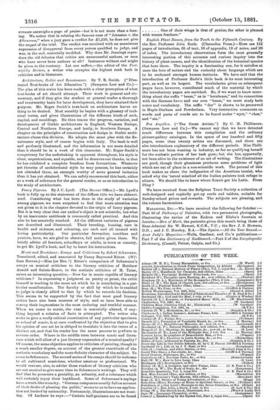English Plant Names, from the Tenth to the Fifteenth Century.
13'y the Rev. Professor John Earle. (Clarendon Press.)—Here are 112 pages of introduction, 65 of text, 16 of appendix, 13 of notes, and 26 of index. The introductory observations form the most generally interesting portion of this accurate and curious inquiry into, the- history of plant-names, and the identification of the botanical species that bore them. The inquiry is a fascinating one, for it satisfies at once the love of nature and the curiosity about language which are to be reckoned amongst human instincts. We have said that the introduction of Professor Earle's little book is its most interesting part, as well as its largest. The vocabularies given on subsequent pages have, however, contributed much of the material by which the introductory pages are enriched. So, if we want to know some- thing about the suffix "beam," as in "hornbeam," and its connection with the German baum and our own "beam," we must study both notes and vocabulary. The suffix "der" is shown to be preserved in Maple-Durham and Powderham. Very instructive comments on words and parts of words are to be found under " wyrt," " ches," and "sin."


































 Previous page
Previous page